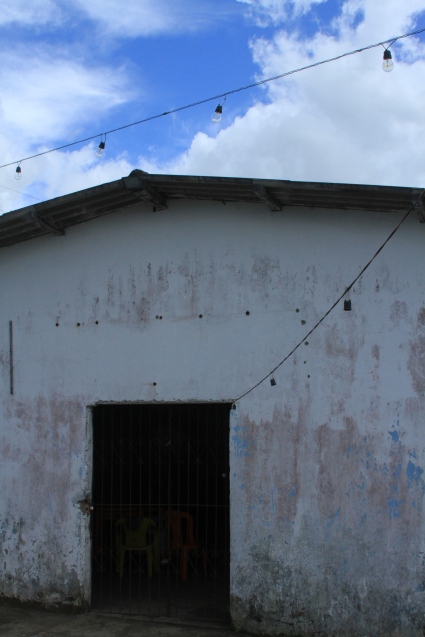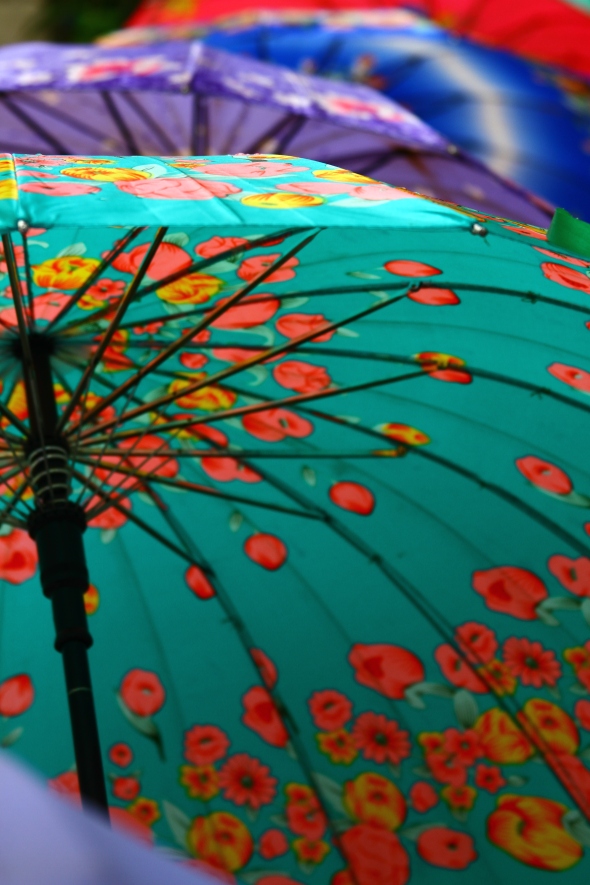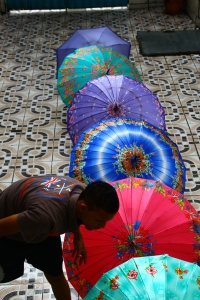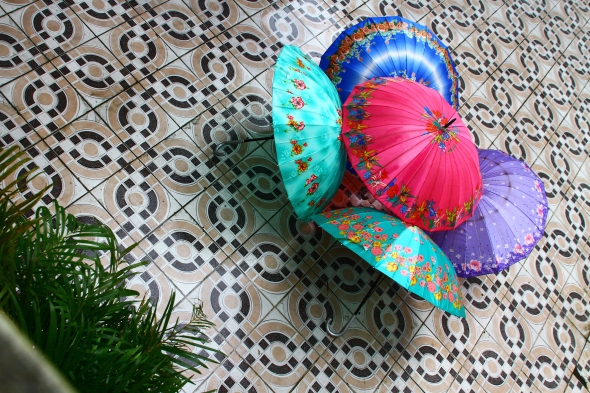Every now and then I have to stop and take a few seconds to remind myself of where I am, and of what I am doing. It’s remarkably easy for me to get lost in the
 intensity of everything around me; every so often it hits, and all the optimism and positivity that usually pervades the majority of me, sinks to the bottom and hides out for a little while. Yet, all it takes is seeing a sweet exchange between a mother and a daughter, a smile from a stranger or a remarkable view to remind me of the good and the beauty—of the things that can get lost in the muck of it all, but are ever so present, as long as we keep ourselves open to seeing.
intensity of everything around me; every so often it hits, and all the optimism and positivity that usually pervades the majority of me, sinks to the bottom and hides out for a little while. Yet, all it takes is seeing a sweet exchange between a mother and a daughter, a smile from a stranger or a remarkable view to remind me of the good and the beauty—of the things that can get lost in the muck of it all, but are ever so present, as long as we keep ourselves open to seeing.
I spent my weekend in Cachoeira, a city in the interior of Bahia, about 2 hours away from Salvador. Better said, I was in Alecrim, located in the rural area of Cachoeira; a beautiful community that has now taken me in three wonderful times, and continues to be the source for great realizations and gratitude, as well as friendship, family, and amazing food. It’s where I spend most of my time simply spending time with others. On Saturday night, I arrived to greet my, previously homestay mother, now simply friend, at the town square, where she sells acarajé on the weekends (basically a delicious fried bean cake filled with yum). I sat under a tin awning rumbling with the stress of the rain, with a few of her cousins and nieces, and listened as they began to discuss their professional dreams.
One said she wanted to be a nurse, the other a lawyer, “se Deus quiser, mas é difícil” (if God so wishes, but it’s difficult). The former said that without money, it was just short of impossible. The latter, that if you study, it can happen, but even still it’s unlikely because getting into a public school is far too competitive. But even if the two had wanted to go to the local university, it doesn’t offer either of the majors that they are interested in, forcing them to seek a public university in the neighboring cities. Commuting becomes a hindrance as time and funding would be a huge burden on the family structure. My host-mother looked at them both as she flipped the acarajé in the spitting dendé oil, “it is not impossible, you need to decide that it’s within reach… then it’s possible”. But when structures have been set in place, as they have, it is easy to see where this disbelief stems from. Even still—the only way to remove oneself from this mold is to step out of it; is to make something plausible with the available resources… and so I want to go back to the photo in the last blog post of the colorful umbrellas.
 My second visit to the acervo was met with bucket-fulls of pounding rain, and buses showering me with muddy, sewage-blessed, rainwater. Dinho came out to greet me at the bus stop, and as it was raining intensely, we simply set up post underneath his umbrella, and got right into discussing the brunt of Brazilian pedagogy. Coming from an inter-disciplinary background in public health and adolescent mental health and violence, Dinho illuminated the fact that Brazil leaves little room for innovation and creativity. Structures are set in place, and if you do not meet the criteria, you are excluded from the academic community. A great majority of teachers today in Brazil prove to have limited schooling, or faulty academic histories. Truly, it seems as though education, like a great majority of other professions in the country proves inconsistent and poorly developed. Dinho made clear that it is not a science; there is no formula or structure in the educational system in Brazil that can be adapted and applied to varied populations or a range of social classes. This creates a cycle that only widens that gap that we hear of, see, and feel so often. Brazil has grown tremendously within the last 10 years, but retains failed educational measures to develop experienced and prepared professionals. And so we turn to local measures and initiatives that work from the inside out, recognizing local cultures and methods that are more adept to serve a set population.
My second visit to the acervo was met with bucket-fulls of pounding rain, and buses showering me with muddy, sewage-blessed, rainwater. Dinho came out to greet me at the bus stop, and as it was raining intensely, we simply set up post underneath his umbrella, and got right into discussing the brunt of Brazilian pedagogy. Coming from an inter-disciplinary background in public health and adolescent mental health and violence, Dinho illuminated the fact that Brazil leaves little room for innovation and creativity. Structures are set in place, and if you do not meet the criteria, you are excluded from the academic community. A great majority of teachers today in Brazil prove to have limited schooling, or faulty academic histories. Truly, it seems as though education, like a great majority of other professions in the country proves inconsistent and poorly developed. Dinho made clear that it is not a science; there is no formula or structure in the educational system in Brazil that can be adapted and applied to varied populations or a range of social classes. This creates a cycle that only widens that gap that we hear of, see, and feel so often. Brazil has grown tremendously within the last 10 years, but retains failed educational measures to develop experienced and prepared professionals. And so we turn to local measures and initiatives that work from the inside out, recognizing local cultures and methods that are more adept to serve a set population.
The rain finally let up after dramatic realizations that really only make you think more, and so we decided to leave that conversation at the bus stop and carry on to Cluberê to introduce ourselves to the students we planned to be working with. We sat everyone in a circle, and spoke a bit about ourselves, our intentions, our project and about what we expected of them. Of about 18 students, 12 of them raised their hands high when we asked who wanted to participate.
After the meeting, I took out my camera and started to take some pictures of a staircase next to a collection of colorful umbrellas opened up and set aside to dry. I noticed that one of the older students was hovering around me. He quietly, without making eyecontact with me, walked over to the umbrellas and told me I should place them on the staircase, as they would be back-lit and the colors would show more brightly. I asked him to give me a hand, and let him set up the image. As we photographed the umbrellas, his excitement became tangible. As he adjusted color combinations and formations, I could tell that he had a distinct image in his head that he was trying to recreate. Within moments, several other students began to help, sharing opinions and making changes.
Ultimately, what does this represent for me? It represents possibility and potential. This is how one ruptures the mold; this is how one takes what he or she is given, and finds something more.
It often takes only one person telling you that your idea is a good one, to make you begin to believe that it is. This works in both the positive and negative sense. For these adolescents, more often than not, the ideas that are encouraged pull them into violence and high-risk situations. But opportunities such as this one open up a new door. Creativity, sensibility, perception, and innovation are all traits that we possess; it is a matter of setting off a trigger and awakening the curiosity that drives it all. This experience is one of those that brings me back to center, that reminds me of exactly where I am and of why I am doing this.
After all our ideas and efforts, the photography project will not be taking place during this adventure as several extenuating circumstances brought us to the realization that now just isn’t the right time. But now, with more time to plan, more time to organize and understand out intentions, motives and goals, I think we can do a lot more with this project the next time around… most probably next June—so stay tuned!
As Dinho would say…
“Calma, coragem, vamos lá”
(calm down, courage, let’s go)”









Só cego não veria o talento, a desenvoltura, e a sensibilidade que possui.. Muito muito muito bom mesmo! Beijao lindona…
Damn, that was actually a really great analogy. Feels very close to home. It made me think of the importance of collaborative participation, where local knowledge is an essential asset.